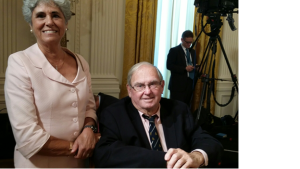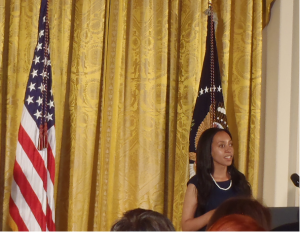October 22, 2015
Star rankings for doctors who deliver better outcomes in workers’ comp
I was in the audience for a presentation on “outcomes based networks” in workers’ compensation while at the SIIA conference this week (Self-Insurance Institute of America) in Washington DC. The two presenters were from Sedgwick (which I believe is now by far the largest workers’ comp claims administrator [claims payer] in the country — servicing mostly self-insured employers) and from Multi-Plan (a huge PPO).
The bottom line is that Sedgwick is now putting INDIVIDUAL treating physicians into ranks, from 5 stars (most preferred) all the way down to 1 star (least preferred) . HOWEVER, many physicians cannot be ranked because the “n” (number of cases for which the payers have data) is too small to analyze with any statistical confidence at all. The star ratings are NOT generally shared with the physicians — but I bet doctors who know the rankings exist can ask pointed questions about where they stand.
The two speakers have been deeply involved in developing the data sets and metrics to assess physician performance. They have also been responsible for packaging that information so people who need to know where to send patients can quickly find the best available nearby doctors. (I am an informed listener on this topic, having developed a physician “report card” myself with less sophisticated data tools in the late 1990’s.)
The presentations were fascinating, both because of what the speakers DID say, as well as what they DIDN’T say. The four most important things they DID say (if I heard correctly) were that:
• Sedgwick’s clients, claims adjusters, and case managers who are making referrals / recommending physicians to care for work-related injuries now have access to a user-friendly website that automatically lists doctors within certain geographies IN ORDER OF STAR RANKING (though the ranking itself is not displayed). Reality check: Some locations simply don’t HAVE any super-top-ranked providers.
• Employers who are able to get most or all of their employees to 4 or 5 star doctors have DRAMATICALLY BETTER RESULTS in terms of medical/functional outcomes, disability duration and cost, including higher patient satisfaction/lower litigation rates. These employers are seeing roughly 15-20% improvement in the parameters of interest. I heard later that these are mostly California results.
• The highly ranked doctors are happy to get the referrals and have NOT been asking to be compensated better when it has been confirmed that they are the best. The highly ranked doctors also tend to be the ones who do a lot of work comp — so they are attuned to the critical issues that need to be managed. Personally, I think those who DO deliver the best results SHOULD thrive and prosper as a result — not just get more patient volume. MANY doctors already feel maxed out!
• A nice endorsement for occupational medicine specialists in general. The speakers consider “occ docs” as “primary treating” providers (along with urgent care, internists and family practitioners) rather than as specialists (e.g. orthopedists, pain management). In general, occ docs rank high. The speakers said it was because of our specialty’s philosophy of care that puts high priority on employing evidence-based techniques for medical treatment and preventing needless work disability in order to optimize patient outcomes and control total episode costs. They said it’s not a sure shot — there are SOME duds in our specialty — but both speakers agreed that as a rule, occ med physicians are among the best. (They only mentioned occ med because I specifically asked the question –and that was because I suspected what the answer would be –and wanted the audience to hear it!)
The three most important things I DIDN’T hear the speakers say were:
• How OFTEN the employers/adjusters/case managers are ACTUALLY choosing docs based on rankings.
• What FRACTION of all doctors in any given geography they actually are ABLE to rank. (In other words, how many cases have Sedgwick’s employer clients actually been SENDING to each doctor.). I wouldn’t be at all surprised if it’s less than 25% of the doctors. I suspect the unranked doctors’ names are NOT presented first.
• How many cases the doctor has to have treated before ranking them makes sense or is fair. Very few payers are going to have the volume of information available that Sedgwick and Multi-Plan do. Buyer beware: TPAs and networks that want to keep up with the Joneses may CLAIM to have ranked providers — but it takes a large number of cases AND considerable statistical sophistication to do this ranking stuff accurately and fairly. One catastrophic injury could make even a great physician look bad without appropriate adjustment. The speakers both acknowledged that getting accurate data and analyzing it in a fair manner has been a big challenge, and that their capabilities for doing so have improved rapidly over the last 5 years.
This IS the wave of the future. Physicians who discover they are low ranked should find out why — and do their level best not to be defensive, but rather learn and improve from the experience. Buyers of /payers for services absolutely do have the right — if not the duty — to select suppliers based on the best information at hand about who will meet their legitimate needs. And physicians are suppliers in their eyes.
Sedgwick got started building their Outcomes Based Networks after participating in a Cornerstone Conversation co-hosted by the American College of Occupational & Environmental Medicine (ACOEM) and the International Association of Industrial Accident Boards & Commissions (IAIABC). This was a four-way conversation among a small group of key stakeholders: ACOEM leaders, large payers, large employers, and state regulators on what needs to happen in order to improve access to high quality healthcare and improve outcomes for injured workers, and to reduce unnecessary costs for employers and payers. A joint project undertaken by ACOEM and IAIABC as a result of that meeting was the production of a Guide to High Value Physician Services in Workers’ Compensation. You may find the observations and suggestions made in this succinct document helpful — whether you are a chooser, a recommender, a payer or a physician-supplier of medical care services.




